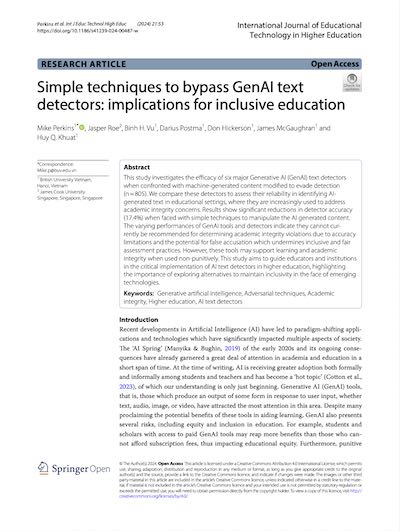Today's article comes from Springer Open's International Journal of Educational Technology in Higher Education. The authors are Perkins et al., from the British University in Hanoi, Vietnam.
DOI: 10.1186/s41239-024-00487-w


You must be an active Journal Club member to access this content. If you're already a member, click the blue button to login. If you're not a member yet, click the sign-up button to get started.
Login to My Account
Sign Up